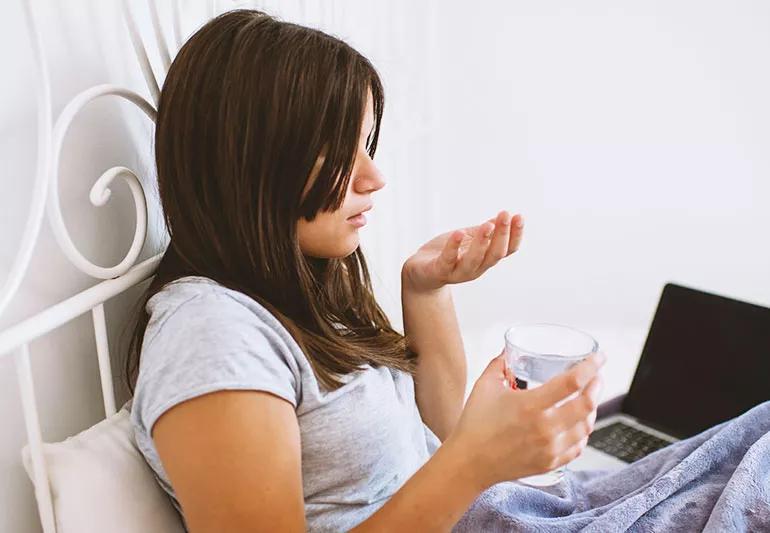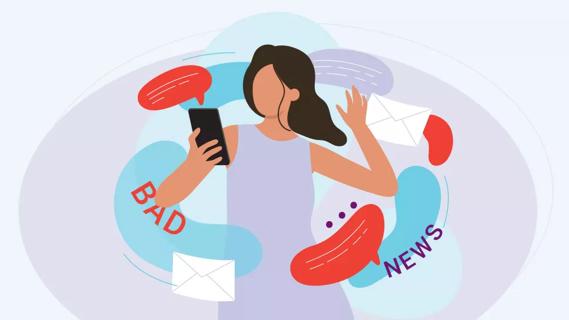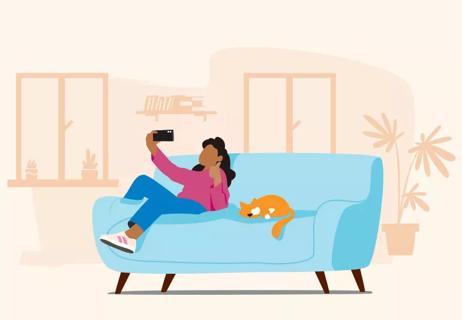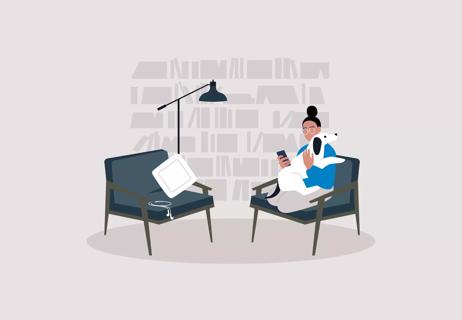Talk to your child about the dangers these viral videos pose to their health

It’s almost impossible to make it through childhood and adolescence without making questionable — and often downright foolish — decisions. Pushing boundaries and taking risks is part of growing up. We do the best we can to insulate our kids from risk, but they’re always finding new and innovative ways to get hurt.
Advertisement
Cleveland Clinic is a non-profit academic medical center. Advertising on our site helps support our mission. We do not endorse non-Cleveland Clinic products or services. Policy
Social media definitely isn’t helping. It amplifies the power of peer pressure, and rewards dangerous risk-taking with likes, shares and empty promises of insta-fame.
“It’s tricky because teens can get positive reinforcement with all the likes and views from the videos they post,” says pediatric emergency medicine specialist Purva Grover, MD. “So, the more risky or shocking, the greater the possibility that more people will see it.”
Challenge videos are particularly insidious. From swallowing cinnamon (which can cause permanent lung damage) to choking oneself to the point of blacking out (which left a 10-year-old girl brain dead), viral challenges on TikTok and other social media platforms encourage young people to record themselves taking inane risks.
One of the most popular — and dangerous — social media challenges involved the misuse and abuse of over-the-counter medications. Another medication-based challenge turned out to be a hoax, a potent reminder that not everything you see on social media is real.
We spoke to Dr. Grover about why medication-based viral video challenges are especially dangerous — and what parents can do to help keep their kids safe.
If this is the first you’re learning about TikTok challenges involving over-the-counter (OTC) medications, you may — understandably — be a bit confused. What exactly are people doing in these videos? Is this really a problem?!
Advertisement
The answer, it turns out, is: It’s complicated.
To illustrate, we humbly submit the stories of two of the most popular challenges involving medication abuse: The Benadryl® challenge and the “sleepy chicken” challenge. One was a real challenge, and incredibly dangerous. The other was an embarrassing public-relations fiasco.
In 2020, a TikTok challenge urged users to take large amounts of the over-the-counter drug diphenhydramine — also known as Benadryl — to cause hallucinations or induce an altered mental state.
Benadryl is an antihistamine most commonly used to treat seasonal allergies, but it can also lessen cold symptoms and reduce itching from bug bites, hives or rashes.
Dr. Grover says the challenge was extremely dangerous, and both teens and parents need to be aware of the risks of these kinds of challenges.
The Benadryl challenge encouraged users to take upwards of 12 tablets at a time, while the directions say children aged 6 to 12 should take one tablet every four to six hours, and adults should take no more than two tablets every four to six hours. The instructions also say not to take the medicine more than six times in 24 hours.
The most common side effect of diphenhydramine, when taken correctly, is drowsiness. But taken in excessive amounts, risks can include:
But the most dangerous outcome? Death. At least one teenager died of a diphenhydramine overdose while participating in the challenge.
Large doses of Benadryl can cause high heart rates, which can trigger an arrhythmia, stroke, seizure or cardiac arrest. All of these conditions could result in permanent brain damage or induce a coma.
“An overdose can harm everyone differently,” Dr. Grover states. “You can’t pinpoint an outcome because everyone will respond differently, which makes this challenge so dangerous and risky.” That danger is part of the reason the U.S. Food and Drug Administration (FDA) released a statement addressing the dangers associated with overdosing on diphenhydramine.
While the Benadryl challenge and its consequences were real, it’s important to remember that not everything you see on social media is. Just ask the FDA!
“Sleepy chicken” wasn’t a real challenge, but it’s a cautionary tale worth retelling.
In the fall of 2022, the FDA released its second-ever statement highlighting the dangers of social media challenges involving medications. It was a response to the exceedingly dangerous, mind-bogglingly random and — as it turned out — almost certainly fictional “sleepy chicken” challenge.
Advertisement
Also known as the Nyquil® chicken challenge, the FDA claimed the challenge encouraged people to coat chicken in cough medicine, cook it on the stove and — presumably — eat the resulting monstrosity. The organization went to great lengths to explain why you should never heat up cough medicine, and why overdosing on the stuff is so dangerous.
It would have been really useful information if the challenge was real. But it wasn’t.
Photos and videos of “Nyquil chicken” did exist on the internet, but not in any significant way, and always pretty clearly as a joke. But awkwardly enough, it was the FDA’s announcement that alerted the masses to the concept. In fact, a spokesperson for TikTok informed journalists that there had only ever been five searches for Nyquil chicken on their platform … until the FDA mentioned it.
Within a week of their statement, searches were up 1,400%.
Interested journalists quickly learned that there were no reports of a person being sickened or killed as a result of that particular culinary/pharmaceutical misadventure because it wasn’t real.
Whoops.
Social media isn’t going anywhere anytime soon. It’s become a part of our lives, for good and for ill.
And it’s important not to forget about the good. For all its faults — and there are plenty — social media can also be helpful. It is, after all, social. Growing up with social media means learning about communication, finding friends who share your interests and, with proper education and support, developing crucial media literacy skills.
Advertisement
While trying to ban your child from using social media is an option, it may not be the best one. In fact, when it comes to TikTok challenges and other potentially dangerous trends, the best way to keep them safe is by talking about them.
Those conversations may even quell your fears, if — as was the case with the Nyquil chicken challenge — the challenge you heard about isn’t actually real.
Dr. Grover says that discussing online videos or viral risky challenges needs to become part of the conversations you have with your children and teens. Just as you would discuss illegal drugs, vaping, sexting and safe sex, you’ll need to address what your kids are seeing online and on social media.
It’s easy to forget that OTC medications can be just as dangerous as prescription medications. Make sure your child knows that it’s possible to misuse, abuse and overdose on any number of substances. Remind them, too, that medications don’t affect all people equally. The person they see misusing a medication on TikTok may not get seriously ill, but others probably will. The consequences of these challenges rarely make it into viral videos — but that doesn’t make them any less real.
“The more you talk about the negative impacts of social media challenges, the more awareness it brings,” Dr. Grover encourages.
Advertisement
And it’s not just what kids see online. Their friends, babysitters, older siblings, what they hear in school — can all influence your kid’s risk-taking behavior. That’s just another reason why it’s important to keep a pulse on what’s happening in your child’s life.
Your kids may not seem like they’re paying any attention to you — and they frequently aren’t — but you should still try to lead by example. When it comes to over-the-counter medications, that means always reading the Drug Facts label and following the instructions provided.
You might be surprised how much of the conventional wisdom around medications is wrong. Make sure you familiarize yourself with trustworthy resources for medical information (like this one), so you don’t pass misinformation on, or unintentionally encourage risky behavior.
Social media challenges that involve over-the-counter medications or common household items (like laundry detergent pods) are particularly dangerous because the materials are easy to obtain.
Especially if you have young children in your home — or children who are particularly vulnerable to peer pressure — it’s important to keep both prescription and OTC drugs in a safe location, out of your children’s reach, with their safety caps locked. Depending on how old your kid is, consider getting a child-proof cabinet lock.
If you think your child has taken too much medication — whether it’s an over-the-counter or a prescription drug — you should contact Poison Control.
If any of the following is happening, call 911 immediately:
Social media is increasingly a fact of life. It’s in our homes, workplaces and schools. Challenges are a part of that landscape, and a lot of them are really great! Whether it’s learning a new dance, styling a new outfit, lip-syncing for your life or inventing new recipes, TikTok and other social media challenges can be a great way for your kids to have fun and be creative — just make sure they aren’t being creative with over-the-counter medications or other dangerous substances.
Learn more about our editorial process.
Advertisement

It isn’t a recognized mental health disorder, but research shows that problematic social media use can negatively affect your mental health, self-esteem and sleep

This trendy practice may boost your physical and mental health — but done incorrectly, it could make things worse

They’re fun to watch, but medical TV shows are often more hype than reality — and you shouldn’t rely on them for factual medical information

Embrace mindfulness and practice checking your phone consciously, not compulsively

Identify your triggers, set ground rules for your break and start practicing mindfulness

Too much screen time and unrealistic expectations and perceptions and can lead to an increased risk of anxiety and depression

The answer comes down to your child’s maturity

Frequent smartphone use can lead to painful issues

Start having sex about 72 hours before ovulation, then at least every other day during your fertile window

Attachment theory suggests that your earliest relationships shape connections throughout your life

It isn’t a recognized mental health disorder, but research shows that problematic social media use can negatively affect your mental health, self-esteem and sleep